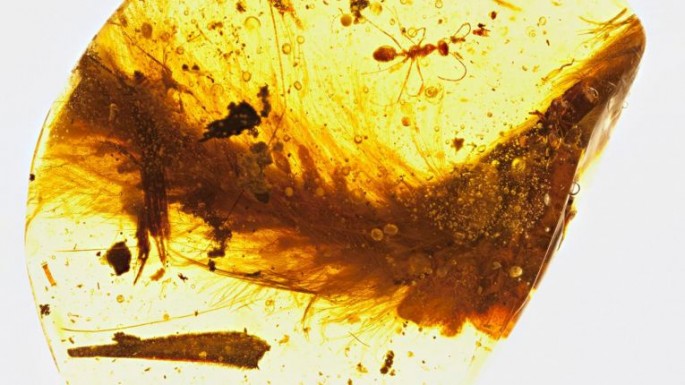A fossilized feathered tail of a tiny dinosaur six centimeters long and in near perfect condition has been discovered at a market in Hukawng Valley in northern Myanmar.
The tail was fossilized in amber was for sale at a market when Chinese palaeontologist Xing Lida spotted it.
Researchers believe the specimen belongs to a juvenile coelurosaur, part of a group of theropod dinosaurs.
The specimen, named "Eva," is the first dinosaur material found to be fossilized in amber. It is fresh and complete with bones, soft tissue and feathers.
According to Xing, who led the research and co-authored a paper on the findings that has been published in the journal "Current Biology," the specimen has been so well preserved that it may be very close to what the dinosaur would have looked.
The feathers, which are brown on the top and pale white on the underside, showed many delicate details, including the arrangement of feathers and the feather follicles.
The specimen shows the difference between the feathers of flying birds and that of dinosaurs. It also allowed scientists to gain a better understanding of the evolution and structure of dinosaur feathers.
Scientists estimate that the dinosaur was around 18.5 centimeters long and lived about 99 million years ago during the mid-Cretaceous period.
According to researchers, an articulated tail vertebrae in the sample ruled out the possibility that it belonged to a prehistoric bird. Modern birds have a pygostyle, a set of fused tail vertebrae that allows it to move tail feathers as a single unit.
According to a June 2016 report by the team, Cretaceous-era bird wings have feathers similar to the flight feathers of modern birds.
The well-preserved specimen will be an invaluable resource for scientists studying the evolution of prehistorical species, said Xing.



























